| Lee Waddington is the head of Player Development and the Foundation Phase coach at Burnley Football Club, an elite soccer organization in England. With over 23 years of coaching experience, Waddington has worked with some of the worlds’ top soccer clubs, including Manchester United, Manchester City, and Blackburn Rovers. According to English football’s governing body, the Football Association, he is a “Master Coach.” Waddington has been a consultant to numerous leading soccer clubs and academies in both the professional and private sector in the United Kingdom, USA, Australia, Canada, and across Europe. He is also the founder of The Pre Academy (http://www.thepreacademy.com), a successful soccer learning and coaching company, and CEO of The Future Game (http://thefuturegame.co.uk), a coach empowerment and transformation company. |  |
In this interview, Waddington discusses his past and current roles as a soccer coach, his coaching philosophy, and how he uses the science of learning to train elite soccer players.
Lasting Learning (LL): How long have you been a soccer coach and what inspired you to become a coach?
Lee Waddington (LW): I started coaching in the early 1990’s when I was 22 years old, shortly after my playing career was cut short by a back injury while playing for Stockport County FC, an English professional soccer club. Coaching offered me a different route to staying involved in the game—the game I’d fallen in love with as a five-year-old boy going to watch my first professional game at Manchester City FC.
LL: Where, or how, did you learn how to coach soccer?
LW: The learning pathway I have been on since I began coaching has been predominately managed by The Football Association (the FA), which is English football’s governing body. Through the FA I successfully completed the highest level of youth coaching qualifications, the UEFA ‘A’ License and, most recently, the FA Advanced Youth Award.
LL: What teams have you worked for in the past and for what team are you currently working?
LW: During my career, I have been extremely lucky to work at some of the world’s leading professional soccer clubs, such as Nottingham Forest, Manchester United, Blackburn Rovers, and Manchester City. These clubs have offered me great opportunities to observe the best practices, learn the fine details of the game, and develop myself, not just as a coach but also as a responsible member of the team.
I’m currently the Foundation Phase Lead Coach at Burnley FC. In this role, I am responsible for all aspects of player development (ages 5 to 12)—coaching structure and planning, player signing/retention/release, and mentoring, and feedback presentations. Above everything else in this role, I believe the most important element is to ensure that we foster a love of the game in every child that enters our elite player program. It’s a very long and rocky road to the top of professional soccer, where many fall by the wayside, so we must adhere to a set of values that delivers fun and enjoyment as core principles of everything we facilitate. I want children looking back on their time with us to hold memories of happiness and laughter, as well quality soccer practice.
LL: What is your general philosophy when it comes to coaching and how has it changed over time?
LW: My main objective in coaching from the very beginning has always been to develop players and to help them achieve their maximum potential, both as a person and as a player. The character of the person is very important to me, and I expect athletes that work with me to be humble, polite, and respectful to everyone they come into contact with.
When I set out nearly 25 years ago on my coaching journey, I was preoccupied with the technical aspect of the game and thought that this was the key to long term success above everything else. Therefore, my practices in the beginning focused on passing and receiving drills and not so much on the game as a whole. It was during my time at Manchester United that I was exposed to their philosophy of utilizing small-sided games in practices, and this is when I began to adopt a more games-based type approach to my own coaching methodology.
Over the past fifteen years I have become increasingly interested in how children learn and how this can be linked to elite player development. From my extensive research during this period, I created my own game-based coaching method that utilizes interleaving (mixing up different game elements) to teach players the game in a more creative and engaging way. By granting children the freedom to play, they get untold opportunities to observe, analyze, make decisions, and take action in situations specific to the “real” game.
My present day philosophy is one of being engaging, motivational, and simple (without being simpler). I use a type of games-based approach that allows players to participate in conditioned and unconditioned games of all shapes and sizes that focus on key elements of the game. Facilitating this system over an extensive period of time has proven to be successful when it comes to key elements of elite player development, such as:
- Character: grit, perseverance, respect, growth mindset
- Psychological: communication, commitment, confidence, control & concentration
- Social: learning, behaviours, relationship management, independent learner
- Technical/Tactical: ball mastery, decision making, positional understanding
- Physical: pace, power, ABC’s (Agility / Balance / Coordination)
LL: What kind of insights have you gained over the years that you might communicate to a parent of a young soccer player?
LW: Over the past twenty years I have had many different insights to the game and I suppose one of the constants has been that coaching/training for children must be fun and motivational. Like anything in life, if you love what you do you will try harder at it, remain committed to it for much longer, and be less likely to quit when things go wrong. Ultimately, this all leads to a higher degree of success. To soccer parents, I would encourage them to ensure that their child is participating in soccer activities that he or she loves and that the environment they are placed in is safe and full of fun, learning, and respect. Parents must also support their children in a way that fills them with the optimism so that they can achieve their goals. It is very important that a child believes they can achieve their goals because ability and motivation without optimism will never be enough. This is especially important in the world of elite soccer, where poor form or injuries can really have a negative psychological effect on the athlete.
LL: What kinds of challenges are you presently facing as a coach?
LW: Society is constantly evolving and a completely different socialization process now shapes children’s learning and development experiences compared to that of 10 or 20 years ago. Children’s formal (adult-developed and adult-led activities) and informal (child-developed and child-led activities) development environments have undergone extensive change, which has significantly impacted the ways in which technical, physical, psychological, and social skills are being developed. The 21st century now sees TV, computers, social media, and parental-driven safety reducing a child’s access to self-directed “football-related play,” opportunities that made a significant contribution to the holistic development that helped previous generations of soccer players achieve elite status (e.g., Gerrard, Giggs, Rooney, etc). A child’s primary development experience today exists whilst under the structured guidance of the coach, an environment that does not provide the same development experience as the street, park, or local field.
This is where the individual learning strategies that drive the practice environment come to the fore, as they allow the children to fully develop key supplementary skills that the street used to develop, such as independent problem solving, freedom to be creative, effective communication, and resilience. Football-related deliberate play implemented within a personalized learning environment is a key tool when delivering a formal coaching program. Development research specific to football has identified that players who reached professional status engaged in over 300 hours of football-related play activities per year between the ages of 6 and 12 (approximately 1800 hours total).
LL: What do you find MOST challenging about training athletes?
LW: The most challenging aspect of training modern day athletes is working around their difficulty in receiving constructive criticism and their frustration in being unable to master a skill immediately. Generally speaking, society wants instant gratification and we see this on a weekly basis on our TV screens in shows such as X Factor, where instant fame and fortune is the main driving force behind most the contestants. I work extremely hard with the athlete to foster a love of the game and develop a growth mindset where they embrace challenges, persist in the face of setbacks, see effort as the path to mastery, learn from criticism, and find lessons and inspiration in the success of others. As I stated earlier, the road to success in professional soccer is a long and rocky one, and if an athlete does not have a growth mindset, he or she is most likely destined to fall short.
LL: In the years you’ve been involved with sports training, what has changed in the way you have approached assessing the needs of an athlete?
LW: In the past decade, my approach toward the athlete has not so much altered but has become more detailed in what he or she needs as an athlete and as a person. The humanistic level of detail on the psychological and social side of things has increased ten-fold. I now utilize what I call the Individual Player Pathway (IPP), which is a chart containing the details on the main needs of every athlete I am developing. The IPP outlines their personal information, primary and support playing positions (and development reasons for them), review focus, needs across the four corners of development, and the intervention strategies to be used to fully support the athletes. This chart is used in every practice and its aim is to support every athlete with appropriate interventions.
The main difference in my practices, as opposed to other coaches, is that I focus on the needs of the individual, and implement strategies that will support the athlete fully. For example, if an athlete is struggling with his or her concentration, I utilize the following set of strategies as support:
- Make the athlete my assistant coach: Give him/her responsibilities during the session (e.g., organizing kit, holding up the tactics board during breaks, devising and asking two questions about the practice topic)
- Beat the clock: Notify the athlete that during the practice I will ask them to get on the ball within a specific timeframe (e.g., within 40 seconds)
- Correct challenge point: Ensure that what I am asking of the athlete is challenging enough without being too easy or hard
These types of strategies are far removed from what would be deemed to be “traditional coaching,” but they completely transform the way athletes learn and develop on all levels.
LL: How do you assess the skill level and readiness of an athlete?
LW: I assess the athlete during every practice, and after each practice I complete an observation and assessment chart. Simplicity is the key when assessing athletes and I utilize a traffic light system—green = achieved, yellow = partial achievement, red = not achieved—to complete and then visualise the information. The practices are sometimes recorded on video, so I can then re-watch the footage, rewinding and pausing when necessary, to gain even more insight.
I assess the athletes against a set of criteria, such as:
- Ball control (with and without pressure)
- Ball retention
- Prior aware
- Key passes
- Pitch geography
- Aided shot deficiency
- Key psychological and social elements
- Physical attributes
I do not use this information in isolation but marry it with thoughts from the other coaching staff, my own thoughts on the athlete, and how an athlete reacts to different stimuli, such as bad luck, mistakes, and success.
LL: How have you incorporated the science of learning into your coaching practices?
LW: One key area that has taken-up an enormous amount of my time over the past few years is identifying ways in which the science of learning can have a positive impact on the work I do with elite athletes. Some of the major ways I have incorporated the science of learning into my own practices are detailed below:
Spacing/Interleaving
Endorsed by many of the top learning scientists in the world, including Dr. Robert Bjork at UCLA, spacing/interleaving is one of the most robust, effective ways of improving learning, and I have embraced this technique over the past year with our elite athletes across the U6 to U11 age groups. Instead of practicing the same skill over and over before moving on to the next skill, I have my athletes practice the various skills in a mixed-up fashion. This type of interleaving creates a situation in which there is spacing, or time, in between practice sessions of each skill, which ensures that the athletes activate their long-term memory of how to perform each skill when they practice it again. Decades of research in the human learning and memory by Dr. Bjork and others has demonstrated that long-term learning profits from such activation and retrieval from long-term memory. I have found that spacing/interleaving the key components of the game (i.e., passing and receiving, dribbling, combination play, defending, finishing) across each practice has had huge benefits when performance has been assessed in specific games against quality opposition.
When observing practices, it is very obvious that our athletes are highly motivated, ambitious, optimistic in their approach to new skills, and resilient to setbacks. I believe this is largely due to the performance benefits that have resulted from the technique of spacing/interleaving.
Growth Mindset
The concept of “mindset” has gained a lot of attention since Stanford University psychologist, Carol Dweck, introduced it in her 2007 book, Mindset: The New Psychology of Success.
Those with a “fixed” mindset, according to Dweck, believe that people’s intelligence and abilities are static and outside of their control—the widely accepted theory of cognitive development through the 1960s. In contrast, those with a “growth” mindset understand that intelligence is dynamic and changeable. As neuroscience has now decisively shown, the brain changes based on one’s experiences and efforts. Implementing the concept of the growth mindset within the practice framework of interleaving has definitely enhanced the resilience and determination of our athletes when faced with failure, setbacks, and new problems. No longer do we see players giving up when things go wrong or get a little tough. Instead, they now embrace the challenge and try to work out solutions to the soccer problems they face.
Through my research, I have also looked to experts in the field of psychology to help me further understand my athletes and how best to profile them for long-term success. There have been many influences here but I will detail a couple that have greatly impacted on me and my work:
Learned Optimism and Grit
The world-renowned work of Dr. Martin Seligman and Dr. Angela Duckworth has had a profound effect on me and added so much value to the work I currently facilitate. Without going into great detail, the research of Dr. Seligman over many years on the power of optimism to fight depression and attain success has been invaluable to me when supporting and developing young athletes.
I work to his formula: ability + motivation + optimism = success
Dr. Duckworth is a protégé of Martin Seligman and she has created a whole pantheon of followers for her amazing work on grit. Through her development of the grit scale, many organizations have utilized it to great success when evaluating new officer recruits, business executives, and elite athletes. I have successfully implemented the child version of the grit scale to add further insight to our elite athletes.
The Marshmallow Test
In the late 1960s and early 1970s, psychologist Dr. Walter Mischel led a series of studies on “delayed gratification” at Stanford University. In these studies, a child was offered a choice between one small reward—like a marshmallow—provided immediately, or two small rewards if they waited for a short period of time (approximately 15 minutes), during which the tester left the room and then returned. It’s been shown that children who choose to delay their gratification by waiting for the two rewards rather than just taking one reward right away tend to have better life outcomes, as measured by SAT scores, educational attainment, body mass index (BMI), and other life measures.
I decided to implement this simple test with our elite athletes as part of the profiling process. Its success will not be known to us for several years down the road, but from research in other fields over many decades there is real credibility to the outcomes.
LL: Drs. Robert and Elizabeth Bjork at UCLA are known for their work on “desirable difficulties,” which is a term used to describe situations in which making things relatively difficult on learners during practice can actually boost long-term learning. Have you incorporated desirable difficulties into your own practices as a coach?
LW: Following from research that I have carried out in conjunction with Drs. Robert and Elizabeth Bjork on “desirable difficulties,” I have implemented what I call “constraints” or “scaffolded-based coaching” within my program. The aim of these techniques is to make things more difficult for the athlete, so that they have to think deeper and work harder to find solutions to the problems they are faced with. Working through these difficulties leads to better development and long-term retention of the skills that are needed in game situations.
I use many constraints/scaffolds with during practices. Here are some examples:
- Making the area of play smaller – less space and time to play
- Asking a player to try a specific skill or move only to gain a specific outcome, e.g., like only dribbling the ball when in possession
- Nominating one player to be the only voice on his team – focused on communication
- Beat the clock – player is to touch the ball within a set time frame
LL: How receptive have your athletes been to the use of these desirable difficulties during practice?
LW: The techniques I use are intended to stress the player in a specific, supportive manner but never in a negative way. Each of the athletes fully understands the process, what their learning goal is, and that I am there to push and support them in different ways for them to be ultimately successful. Having the athletes better understand how to learn and what learning is all about has definitely benefited them and the flow of the entire system. They have taken ownership of their learning and because of this ask more insightful questions, facilitate trial and error to find answers, and utilize observations and modelling to better understand the specifics of the game.
LL: From what you’ve seen in the sports world, how often do you think coaches and athletes base their practices on empirically-validated learning principles? If seldom, why do think this is and what can be done to change this?
LW: Over the many years that I’ve been involved in coaching and developing athletes, I have yet to come across anyone else who utilizes empirically-validated learning principles. I attribute this to several factors, including a difficulty in breaking away from traditional practices, fear of change, and a gap in the skillset of coaches when it comes to the science of learning and how children develop.
However, after just completing my FA Advanced Youth Award, I do believe there is change in the air with some excellent practitioners and FA tutors facilitating truly great work. They are starting to embrace and make use of certain learning principles and this can easily be observed in the practices they facilitate with their players. The biggest step forward within this growing community is the importance being placed on how children learn and the psychological elements that make up the elite athlete.
I still see myself and the small team who work with me as market leaders within soccer when it comes to practice creation, development, and execution. The practice itself (i.e. the X’s and O’s of the plan) is no longer the sole focus as the strategies of individual player are equally important, if not more important, to the process of long-term athlete development. Practices that contain more psychological and social interventions have become the norm as the technical and physical elements come out as a by-product of any practice where a ball is in play.
The way to move forward change anything is education, education, and more education. Only when we educate can we truly develop ourselves and the athletes we have in our care. Looking to the experts in the learning sciences is a vital component, as they hold the key to effective and successful teaching. I have looked to, and connected with, these experts for many years and without them I do not believe I would be coaching and developing athletes to the level that I am today.
LL: What kind of role does technology play in your coaching practices?
LW: Modern day elite soccer makes use of a variety of current technologies to assist with developing and supporting athletes, from video and online streaming to computer software and GPS/heart rate monitors. There are many technologies that support and facilitate the training process.
The only technology I use with our elite athletes is video or IPad usage. Specific practices or games will be videoed and this footage will be utilized to provide feedback to the players as clips presented to them within a group setting. Some of the coaches will use their IPad during practice so that they can support an athlete in real time. IPads, or other portable computer devices, are also very useful to show athletes footage of the world’s best players, like the way Lionel Messi dribbles or Luis Suarez finishes. We then ask the athlete to model their play or behavior after this specific player.
LL: What kinds of technology would make training better?
LW: Of course, training would be greatly enhanced if everything was videoed, as this bank of footage and data could be used in many different ways to support and further develop the athletes. It would allow the coaching staff to email the athletes more footage of themselves, highlighting their strengths and weaknesses. It also would be useful over a long period of time for the staff to make even better evaluations of the athletes and whether to retain or release them.
Issuing of IPads, or other portable computer devices, to every player would be a huge step forward, so that they could be connected to the coach on an even higher level. Using emerging technologies that can be utilized by both athletes and coaching staff would enrich the learning environment, and implementing longer practice times so that athletes could embrace the interaction with technology would definitely improve player development.


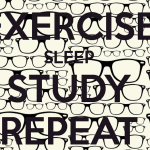




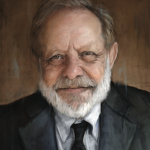





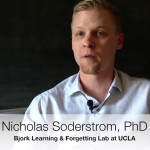










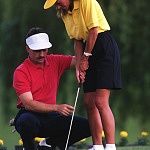



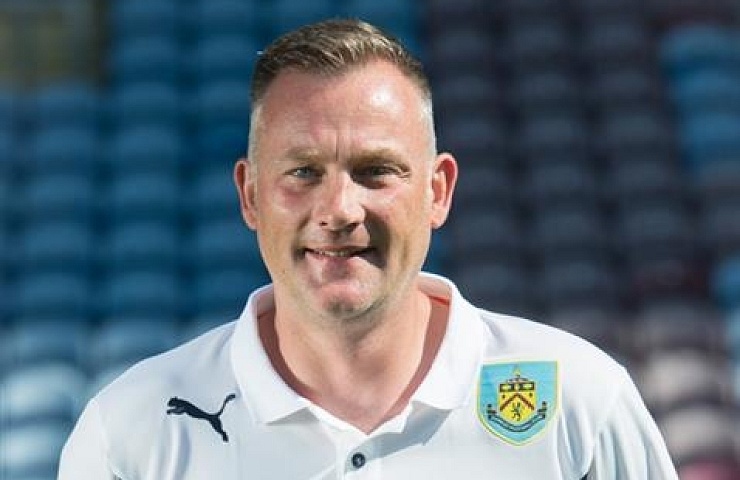
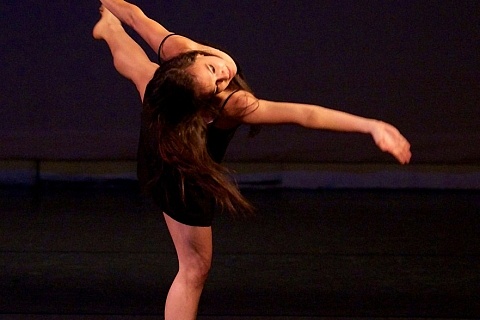
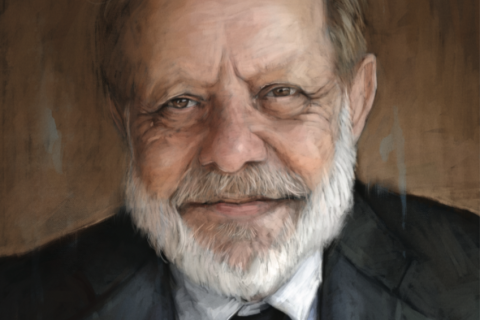

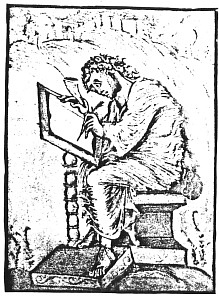
Leave a Reply
You must be logged in to post a comment.